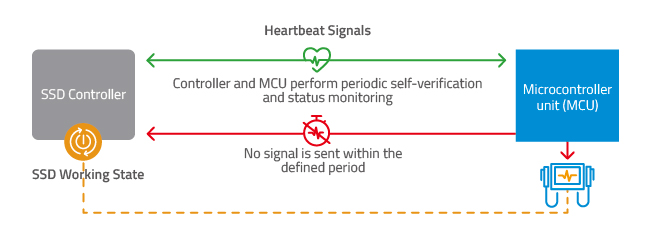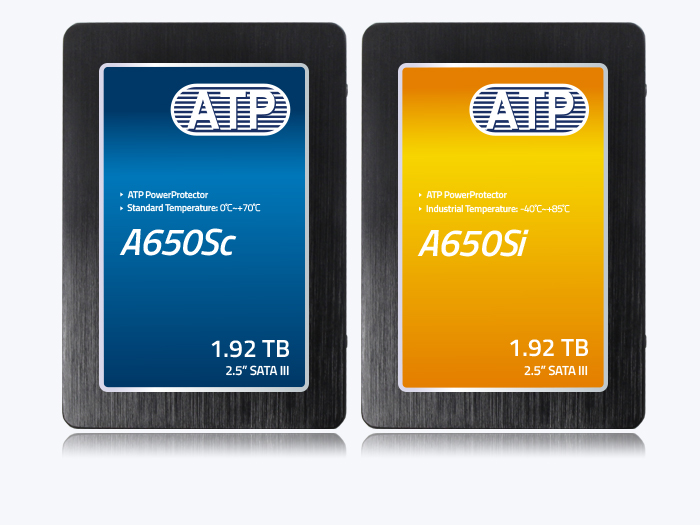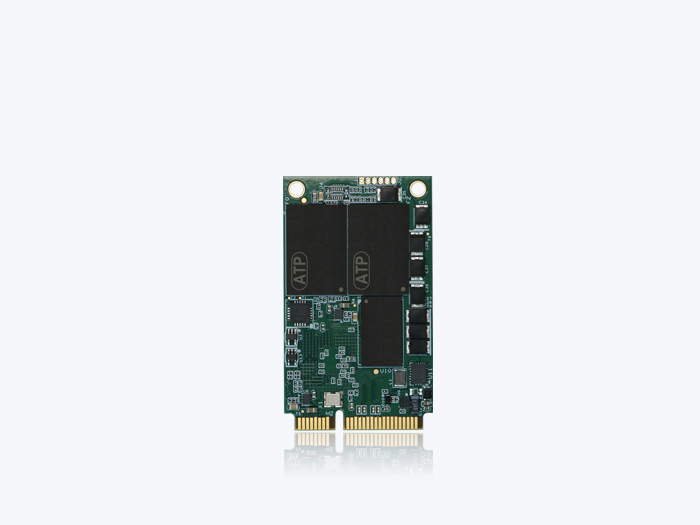
Imagine a ravaged, post-apocalyptic world, where cities are fragmented and constantly threatened by supernatural creatures. You are the protagonist, and you have to deliver crucial cargo to rebuild strands of a network that will reconnect and unite these fractured cities to prevent humanity’s total annihilation.
To fulfill this mission, you need to traverse enemy zones and treacherous slopes. Time is of the essence, and you cannot afford a frozen system or a field-side reset. You need equipment that stays aware and self-stabilizes. Your unique ability: heal yourself and return to life.
While the scenario is obviously fictional, ATP Electronics channels the leading character’s resilience to its solid state drives (SSDs). Equipped with constant health sensing and the ability to perform controlled, autonomous reboots, ATP SSDs can restore themselves to operational state the moment they detect their own unresponsiveness.
The Challenge
When SSDs become unresponsive, the most typical and fastest temporary fix is to perform a reboot. Imagine, however, that your SSD is out there in space, in deep-sea energy exploration efforts, or in rugged and mountainous environments. Sending someone to perform the reboot could be arduous, time-consuming, and expensive; not to mention, operations will have to halt until the reboot is done, leading to costly disruptions.
The ATP Solution: Pulse Reboot Intelligent Self-Healing and Recovery Technology
Pulse Reboot is a self-healing technology that enables the SSD to monitor its health constantly and autonomously performs a reboot as soon as it detects a “freeze” event or when it becomes unresponsive.
By recovering without any human intervention, SSDs with Pulse Reboot ensure uninterrupted operation and quick responsiveness. This self-healing technology is particularly important for industrial and embedded applications where uncompromising reliability is essential amidst harsh, remote, and unmanned environments.
Emergency Measures for Restoring the Heartbeat
A robust heartbeat signifies life. When the heart stops, a medical intervention is performed, such as using a defibrillator or performing cardiopulmonary resuscitation (CPR) to restore blood circulation to the brain and other vital organs.
Pulse Reboot works in a similar fashion.
1. The SSD controller sends a “heartbeat signal” to the onboard microcontroller unit (MCU).
2. The onboard MCU acknowledges the signal in a continuous handshake loop to verify that the controller is functioning normally.
3. If the signal is not received within the defined period, the MCU interprets this as a controller freeze. This time frame is the optimal interval balancing responsiveness and false triggers.
4. Upon detection of the freeze, the SSD initiates a power cycle and reboots itself. This can be likened to the MCU acting as a defibrillator to revive the SSD back to its working state.

Pulse Reboot Features
Post-Reboot Recovery
The handshake mechanism automatically resumes after the reboot. If the controller returns to normal operation, the SSD continues to function without user intervention.
False Trigger Protection
Pulse Reboot uses fail-safe logic with multi-step handshake and reboot logic to minimize the risks of infinite loops and prevent unnecessary downtime. It requires a maximum of three consecutive power cycles before stopping to prevent further complications, signaling further investigation or the necessity of physical repair or replacement of the SSD.
Power-Safe Mindfulness
During low-power and sleep modes, the controller and the MCU suspend the signal exchange to prevent accidental power cycling or reboots while the SSD is in an expected inactive state.
Pulse Reboot Benefits
- Automatic recovery from minor hangs without the need for human intervention
- Minimized system disruption ensures the prompt resumption of mission-critical operations and maintains service quality
- Enhanced system reliability and uptime with proactive SSD self-healing and recovery
- Fail-safe reboot logic and false trigger protection minimizes unnecessary downtime
- No host or driver dependency, as it leverages a devoted MCU that works with the SSD controller
Summary
ATP Pulse Reboot is a self-healing technology that allows SSDs to constantly monitor their health and autonomously perform a reboot when they detect a "freeze" event. This technology is particularly important for industrial and embedded applications using SSDs installed harsh, remote, and unmanned environments.
With Pulse Reboot, performing a power cycle to restore the SSD back to normal function does not require human intervention, thus reducing maintenance expenses and preventing service downtime or disruptions that could lead to higher costs.
For more information on the ATP Pulse Reboot Technology, visit the ATP website or contact an ATP Representative in your area.


